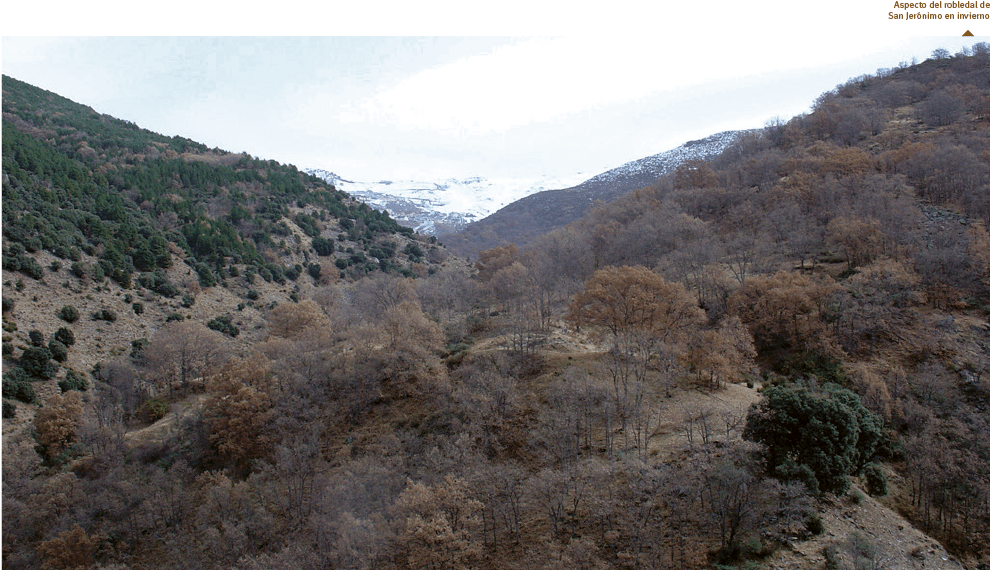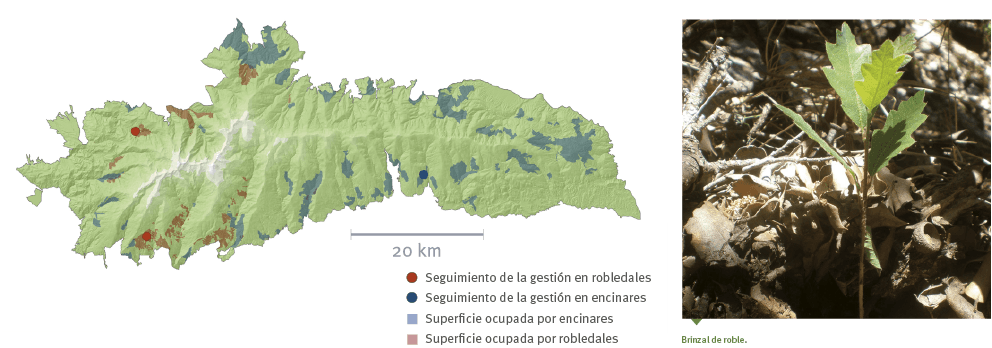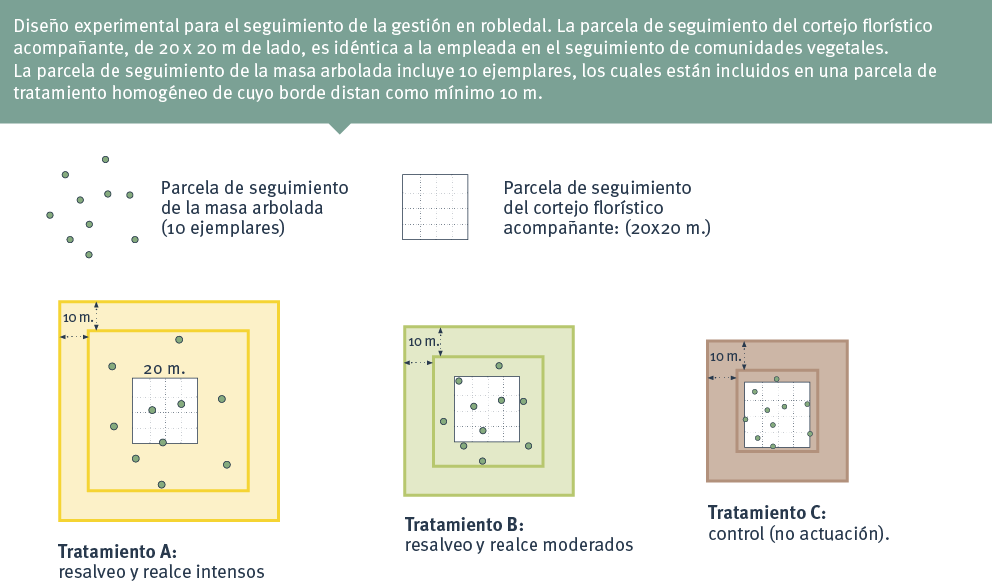
Aims
The goal is monitor the main management actions in Holm oak woodlands and pyrenean oak forests in Sierra Nevada, evaluating to what degree these improve the state of the stand, favouring its diversification both floristically as well as structurally —in short, bolstering its resilience. The actions include thinning and clearing, selective cutting, and deadwood removal, as well planting and sowing to encourage diversity, enrichment, and colonization of potential areas.
The specific objectives are:
- To determine the effects of the actions to improve the physiological state of the stand, evaluated through its vegetative vigour in relation to its capacity to resist possible disturbances that might be aggravated by global-change phenomena.
- To help elucidate the relation of the density of the Holm oak and Spanish oak with respect to its regeneration, seeking the optimal density at which the flowering, pollination, and fruiting processes are most successful (maximum productivity) as well as actions that favour the capacity of seed regeneration (seedlings).
- To determine the most appropriate recovery actions of the stand at each site (according to elevation, exposure, precipitation, soil type, etc.) and type of stand.
- To appraise the success of sowing and planting to foment diversity, seeking to promote the formation of mixed stands rich in tree and shrub species.

Method and effort
The experimental design involves the study of two oak woodlands, one on the northern slope and the other on the southern slope. In each of these, three zones were delineated: oak forest, transition oak-pine forest, and pine forest.
Prior studies:
- Study of the time course of the area under treatment.
- Comparative structural study by systematic photographs.
Monitoring of the actions on the forest mass:
- Three treatments of different intensity. Monitoring of 3 replicates/treatment, including each of them:
- Monitoring of the plot within the stand: marking and monitoring of 10 individuals per plot (3 branches/individual). Measurement of conventional dasometric variables, disease incidence, vegetative growth, productivity, and flowering.
- Monitoring plot of the accompanying floristic inventory: certain groups of species are studied as possible indicators of structural and functional changes in oak forests and Holm oak woodlands.
Monitoring of sowing or planting for diversification and enrichment:
- Study of survival of plantings (monitoring of 30 seedling transplants per wooded area in a total of 3 representative wooded areas) and sowing (30 squares in pine/oak forested zones; 30 squares in a zone of medium degradation without tree cover).

Periodicity
The treatments will be monitored after one year, and subsequent monitoring will be every 2-3 years, according to the results found.
References
Álvarez, L., Alejano, R., Madrigal, A. and Martínez, E. 1997. Influencia de los tratamientos selvícolas destinados a optimizar el desarrollo de Quercus ilex ssp. ballota bajo la cubierta de pinares de repoblación. En: Actas del II Congreso Forestal Español. Sociedad Española de Ciencias Forestales.
Guarriguata, M. R. 2009. El manejo forestal en el contexto de la adaptación al cambio climático. Revista de estudios sociales, 32: 98-113.
Noss, R. F. 1999. Assessing and monitoring forest biodiversity: A suggested framework and indicators. Forest Ecol. Manag., 115: 135-146.